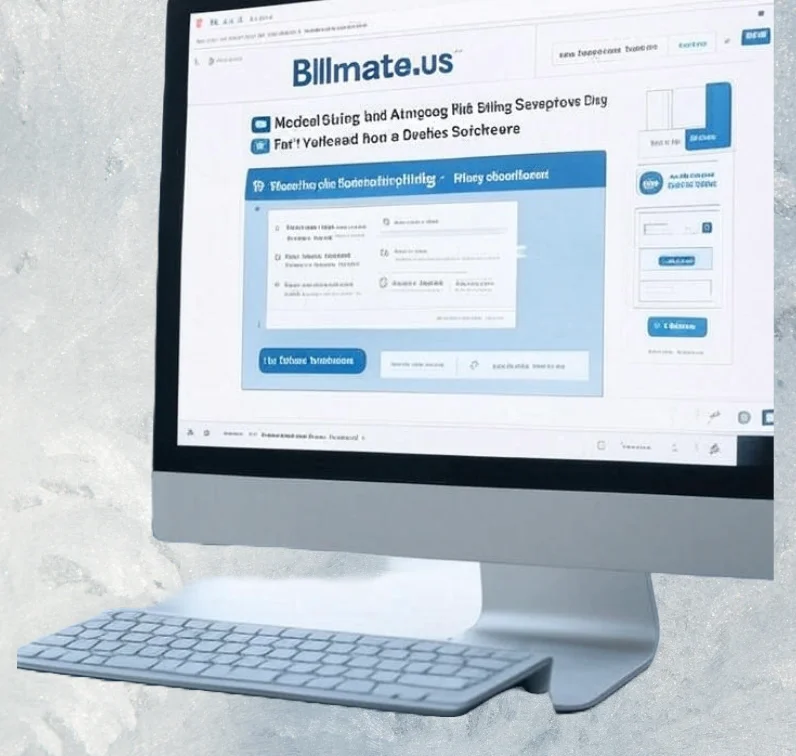
What is Value Based Care? A Complete Guide to Value Based Reimbursement, Alternative Payment Models & More
By Billmate
July 1, 2025, 7:56 a.m.
What is value-based care?
In today’s healthcare world, there’s a huge buzz around cost-based, value-based care. But what is value-based care, surely? Well, think of it like this—instead of paying doctors and hospitals for each check, test, or surgical treatment (just like the vintage rate-for-provider days), cost-primarily based care pays them for retaining humans health and delivering better outcomes.
So, if a sanatorium facilitates you managing your diabetes well, prevents costly sanatorium stays, or makes sure you get better faster after a surgical operation, they get rewarded for that. Patients win due to the fact they get better care.
Providers win because they’re paid for quality, not just quantity. And the whole healthcare system wins because costs go down and results go up.
This is why so many health systems, insurers, and government programs are pushing towards value-based healthcare. Instead of endless bills for every single visit or lab test, it’s about value-based reimbursement—paying for results.
Why the change? The old way—the fee-for-service vs. value-based care debate—showed us that when providers get paid for more tests and visits, they’ll often order more than necessary. But now, with rising costs and smarter patients, everyone wants care that’s efficient, proactive, and truly focused on people, not paperwork.
Fee for Service vs. Value-Based Care
Let’s dig deeper into fee-for-service vs. value-based care—because understanding this is the secret to why healthcare is transforming so fast.
In a fee-for-service model, you break a leg, you get an X-ray, and you pay. You get surgery, you pay. Every single service has a price tag. Doctors and hospitals make more money when they do more—whether you needed it or not.
That sounds fine until you realize it can lead to overuse, unnecessary procedures, and higher bills for everyone. Patients feel stuck in a system that treats symptoms, not root causes.
With value-based healthcare, it’s flipped on its head. Now, payment depends on how well the provider keeps you healthy. If you stay out of the hospital, your doctor actually benefits. If they catch a problem early and manage it well, they get bonuses under value-based reimbursement models.
The best part? Patients get coordinated care. No more repeat tests because doctors didn’t talk to each other. Fewer rushed appointments. And way more focus on prevention.
Still, moving from fee-for-service vs. value-based care isn’t simple. Hospitals need better data. Doctors need time to coordinate. And patients need to play their part too. But as more alternative payment models take root—like the bundled payment model, accountable care organizations, and pay-for-performance healthcare—this shift is unstoppable.
Value-Based Reimbursement
Value-Based Reimbursement
Let’s get actual about value-based care, totally reimbursement—because that is where the cash talks. So, underneath value-based total care, providers aren’t simply paid for what they do; they’re paid for how nicely they do it. If a fitness system keeps an affected populace healthy at a lower fee, they proportion the financial savings. One great example is the shared savings program. A hospital system is given a target budget to care for a group of patients. If they spend less but deliver high-quality results, they keep part of the savings. If they overspend, they absorb the loss.
Another way is the bundled payment model—where one payment covers an entire episode of care, like a hip replacement. This motivates everyone involved—surgeons, hospitals, and rehab centers—to work together, avoid waste, and deliver better outcomes.
None of this works without risk adjustment in healthcare. Why? Because treating an 85-year-old with chronic conditions is way more complex than treating a healthy 25-year-old. Risk adjustment makes sure payments are fair by factoring in patient complexity.
Programs like MACRA Medicare and the quality payment program set the rules for these payments. They track quality scores, cost savings, and performance to ensure value-based reimbursement really rewards quality, not just cost cutting.
Alternative Payment Models (APMs)
Next up: alternative payment models—or APMs—are the engine behind value-based care.
APMs are creative ways to pay for care that push past the outdated fee-for-service model. They reward providers for better results and cost control. Some top APMs include the bundled payment model, accountable care organizations, pay-for-performance healthcare, and the capitation payment model.
Here’s how it works: an accountable care organization might sign a contract to care for 10,000 patients. They get rewarded if they hit targets for preventive care, manage chronic diseases better, and avoid unnecessary ER visits. Or in the bundled payment model, they might get one payment for a patient’s knee surgery, covering everything from the surgeon to physical therapy.
The capitation payment model takes it a step further—paying a flat rate per patient, per month, no matter how many services are used. This flips incentives completely. Now, hospitals and doctors make more when you stay healthy, not sick.
APMs rely on great data and teamwork. And to make payments fair, they need risk adjustment in healthcare—so providers aren’t penalized for serving sicker or high-risk groups.
APMs are also key under MACRA Medicare and the Quality Payment Program, which push providers to choose smarter ways to deliver care. All this means more focus on population health management, prevention, and quality.
Bundled Payment Model
One of the hottest APMs is the bundled payment model. Why? Because it’s simple and effective.
Instead of billing every unmarried check, sanatorium live, and follow-up visitseparately, a bundled payment model offers vendors one fee for the whole episode of care. So, in case you want a hip replacement, the physician, medical institution, anesthesiologist, and physical therapist will create one budget.
If they deliver care beneath those finances, they keep the financial savings. If expenses run over, they cover the distinction. This motivates everybody to coordinate, saves you headaches, and gets you back on your feet quicker.
But it only works if payments reflect patient complexity—and that’s where risk adjustment in healthcare steps in. It makes sure providers don’t cherry-pick healthy patients just to stay profitable.
The bundled payment model is gaining steam for surgeries, maternity care, and chronic disease episodes. It’s a big piece of the value-based reimbursement puzzle—and perfectly aligns with the goals of value-based healthcare.
Programs like MACRA Medicare and the quality payment program encourage providers to adopt bundled payment models and other APMs to deliver better results at lower costs.
Accountable Care Organizations (ACOs)
Now let’s unpack accountable care organizations—or ACOs—because these are a game changer in the world of value-based care.
An accountable care organization is basically a big team. It brings together hospitals, primary care doctors, specialists, and sometimes even pharmacies and social workers. Their goal? Work together to give patients better, more coordinated care—and get rewarded for it.
Think about it like this: In the old fee-for-service vs. value-based care world, a patient might see three different doctors who never talk to each other. One prescribes a test, another repeats it, the third doctor doesn’t even know it was done—a waste of time, a waste of money, and terrible for the patient.
In an ACO, everyone is connected. They share patient data, avoid duplicate tests, and follow clear care plans. If they keep costs under a target and hit quality goals, they share the savings with Medicare or private insurers—thanks to the shared savings program.
But ACOs take on some risk too. If they don’t meet goals or spend more than expected, they can lose money. That’s why strong data, coordination, and population health management are so important.
ACOs fit perfectly under MACRA Medicare and the quality payment program, both of which push providers to use alternative payment models that focus on results, not just services.
Add in risk adjustment in healthcare, and ACOs can take care of sicker patients without worrying about losing money unfairly. Bottom line? ACOs prove that when providers work together, patients get healthier—and providers earn more by delivering value-based healthcare.
Pay-for-Performance Healthcare
Another piece of the puzzle is pay-for-performance healthcare—or P4P. This one’s exactly what it sounds like: you get paid more when you do better.
Under the old model, a doctor who went above and beyond for their patients didn’t earn more than one who just checked the boxes. Fee-for-service didn’t care about results. It only cared about volume.
Pay-for-performance healthcare changes that. Providers get incentives for hitting clear benchmarks—like lowering hospital readmissions, keeping diabetic patients’ blood sugar under control, or getting more people screened for cancer early.
This model is all about carrots, not sticks. Deliver better care, get bigger bonuses. Miss the mark, and you miss out on those rewards—or even see payment cuts.
MACRA Medicare uses this idea heavily through the Quality Payment Program (QPP). MIPS—the Merit-Based Incentive Payment System—is a huge part of that. Providers report on quality, cost control, technology use, and patient engagement. Their scores determine whether they get bonus money or see payment reductions.
Pay-for-performance healthcare is often part of bigger alternative payment models, like accountable care organizations, the bundled payment model, and the shared savings program. All these push for outcomes, not just services.
But there’s a catch: to make sure providers aren’t unfairly judged, we need risk adjustment in healthcare. You can’t compare a doctor treating very sick, high-risk patients to one seeing mostly healthy people. Fair is fair—and risk adjustment makes sure everyone gets rewarded accurately.
Shared Savings Program
When people ask how all this works in the real world, the shared savings program is the easiest place to start. It’s like the poster child for how value-based care rewards smart, efficient healthcare.
Here’s how it works: an ACO, health system, or doctor group signs a deal to manage the health of a defined patient group—say, 20,000 people. They get a target budget for the year.
If they preserve human wholesomeness, prevent pricey medical institution stays, and coordinate care properly to be available in the under-price range, they cut up the leftover savings with Medicare or the insurer. Everybody wins: patients get better care, companies earn an advantage, and payers save money too.
But it’s no longer an unfastened trip. Providers also have to meet quality benchmarks—so they can’t just cut costs by skimping on care. If they don’t hit those quality scores, no bonus.
The shared savings program fits right alongside other alternative payment models like the bundled payment model and the capitation payment model. It’s all about aligning money with results—real outcomes, not just more services.
Of course, risk adjustment in healthcare keeps this fair. If your patient population is older or sicker, the budget adjusts to match reality. And population health management plays a huge role—helping providers track who needs screenings, who’s due for follow-ups, and who’s at risk for complications.
No wonder the shared savings program has become a core piece of MACRA Medicare and the quality payment program. It’s proof that smart incentives can drive real change.
Population Health Management
All these models—accountable care organizations, pay-for-performance healthcare, and shared savings programs—depend on one thing: strong population health management.
So, what does that mean? Instead of treating each patient visit like an isolated event, providers look at the bigger picture. They manage the health of whole groups—everyone with diabetes or all seniors in a community, for example.
By using data and analytics, they find patients at risk for problems before they happen. Care coordinators help patients stick to treatment plans, fill prescriptions, and keep appointments.
Good population health management also tackles social factors—like access to healthy food, transportation, or safe housing—because these impact health as much as any prescription does.
Managing a population well means fewer ER visits, lower hospital readmissions, and better health outcomes—which means better scores under value-based reimbursement models.
All this ties directly into alternative payment models—like the bundled payment model, shared savings program, and capitation payment model—because keeping people healthy saves money and boosts quality metrics.
Again, risk adjustment in healthcare makes sure providers who serve high-risk communities get paid fairly. And programs like MACRA Medicare and the quality payment program reward systems that show real results.
Risk Adjustment in Healthcare
No discussion about value-based care is complete without risk adjustment in healthcare. It might sound technical, but it’s the safety net that makes the whole system fair.
Here’s the deal: not every patient is the same. One doctor might have a patient panel full of healthy young adults. Another might treat mostly elderly patients with multiple chronic diseases. Without risk adjustment, the first doctor would look like a star—but not because they’re better.
Risk adjustment in healthcare analyzes patient data—age, health conditions, demographics—to adjust payment and performance benchmarks. This means hospitals, ACOs, and doctors aren’t unfairly punished for taking on complex, high-cost patients.
It’s a core piece of programs like MACRA Medicare, the quality payment program, alternative payment models, and the shared savings program. It’s also critical in the bundled payment model, where the payment must match the expected cost for different patient types.
Strong risk adjustment keeps the system honest. It removes incentives to cherry-pick healthy people and ignore those who need care the most. It also supports smart population health management because providers know their work will be measured fairly.
MACRA Medicare
Let’s wrap it all together with MACRA Medicare—the law that made all this mainstream.
MACRA Medicare pushed the healthcare system away from fee-for-service and towards value-based reimbursement. It replaced old rules with two new paths: MIPS (Merit-Based Incentive Payment System) and Advanced Alternative Payment Models.
Under MIPS, providers get paid more or less based on their quality scores, cost control, improvement activities, and use of health tech. It’s classic pay-for-performance healthcare.
Providers who join advanced APMs—like accountable care organizations, the bundled payment model, or the shared savings program—can earn extra incentives for taking on more risk and proving real value.
MACRA Medicare depends heavily on risk adjustment in healthcare to keep payments fair and on the quality payment program to track results.
So, if you’re wondering how the whole shift from fee-for-service vs. value-based care happened—MACRA is the blueprint.
Quality Payment Program
Last but not least: the quality payment program, or QPP. This is how MACRA Medicare makes sure value-based care isn’t just talk.
The quality payment program ties doctor pay to performance. MIPS is one path—measuring quality, cost, technology, and improvement. The other path is advanced APMs, which include models like accountable care organizations, the bundled payment model, the capitation payment model, and the shared savings program.
Good scores equal bonuses. Bad scores equal cuts. It’s all about paying for value—not just services. And again, risk adjustment in healthcare keeps the game fair.
Capitation Payment Model
The capitation payment model is another bold step in value-based reimbursement. Instead of paying for each visit or test, providers get a fixed amount per patient per month.
They keep the money if they deliver care efficiently. If they overspend, they cover the cost. This drives proactive care, prevention, and smart population health management.
To succeed, providers need great care teams, data, and fair risk adjustment in healthcare. The model works well with accountable care organizations, shared savings programs, and other alternative payment models.
Future of Value-Based Healthcare
So, where’s all this headed? The shift from fee-for-service vs. value-based care is picking up speed. More alternative payment models, smarter risk adjustment, tighter population health management, and strong programs like MACRA Medicare and the quality payment program will keep pushing for real results.
It’s not easy—but patients, providers, and payers all stand to win big.
Conclusion
Value-based care is the future. By embracing value-based reimbursement, alternative payment models, accountable care organizations, the bundled payment model, pay-for-performance healthcare, the capitation payment model, and smart population health management, we get healthier people and smarter spending. Programs like MACRA Medicare and the quality payment program keep the system fair and results-focused, with risk adjustment in healthcare protecting everyone.
The old fee-for-service vs. value-based care debate is ending. Value wins.
FAQs
What is value-based care in simple words?
It’s a healthcare model that pays doctors and hospitals for keeping you healthy—not for how many tests they run.
How does the bundled payment model save money?
It sets one price for an entire treatment instead of paying for each service separately—encouraging providers to avoid waste.
What is MACRA Medicare?
It’s a law that shifted Medicare payments towards value and quality instead of volume.
Why is risk adjustment in healthcare important?
It ensures doctors and hospitals are paid fairly based on how sick their patients are.
What does population health management do?
It focuses on improving the health of entire groups, using data and teamwork to catch problems early.
What to read next

By Billmate | July 22, 2025
Medical Billing and Coding Salary 2025 | Online Training & Career Guide - Billmate
Discover the complete 2025 guide to medical billing and coding salary, job growth, online training …

By Billmate | July 19, 2025
Mastering Medical Billing in 2025: Trends, Tools, and Tactics for Success
Explore the top medical billing trends in 2025 including CPT code changes, HIPAA-compliant software…

By Billmate | July 18, 2025
Your 2025 Guide to Medical Billing and Coding: Jobs, Salaries & Online Courses with Billmate
Discover everything you need to know about medical billing and coding in 2025—career paths, salarie…
Join our team to be a part
of our story
Learn more about our career, education and
posting jobs, and
submit simple application.

